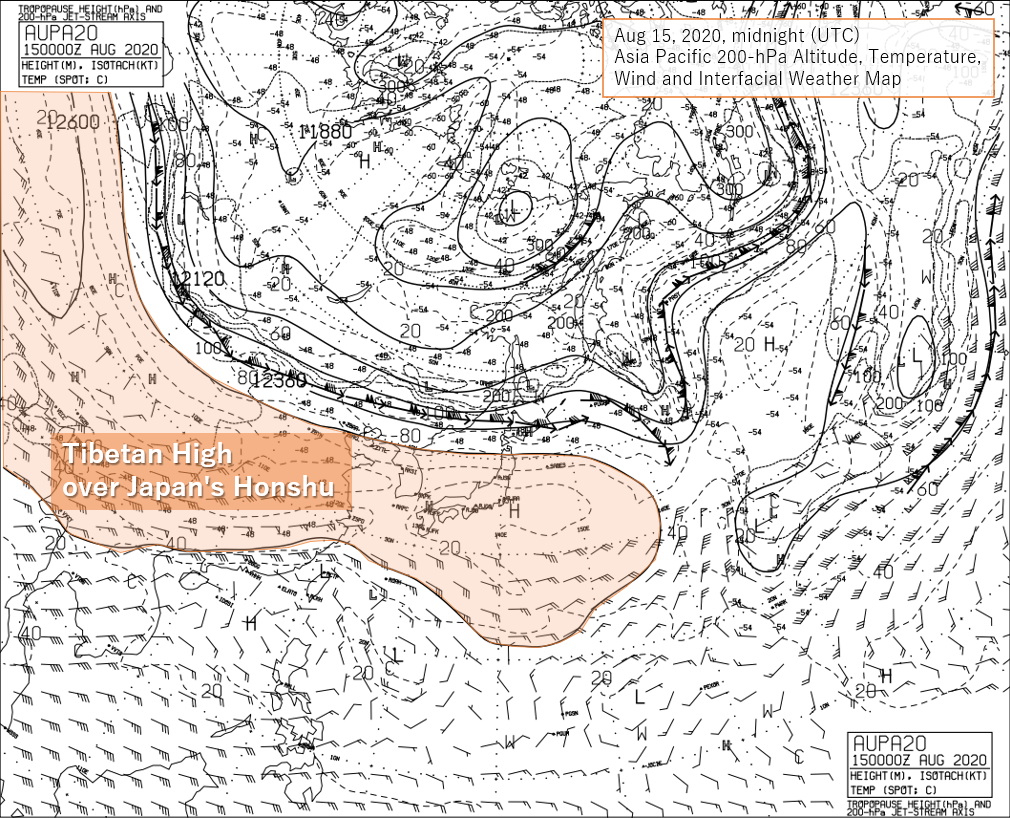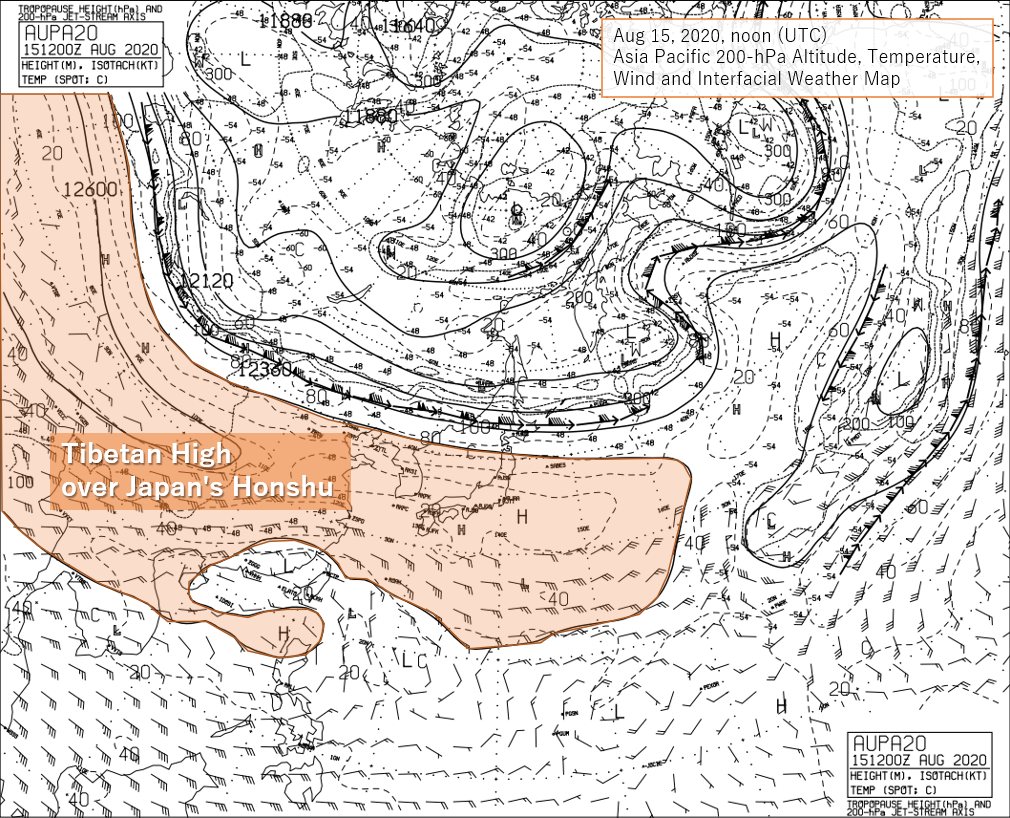The area around Japan is covered with high pressure from the ground to more than 10 km above the ground. This is caused by the Pacific High and the Tibetan High, and it is thought that this year's extremely hot weather is also caused by the combination of these two high pressure systems.


by Japan Meteorological Agency
Pacific high-pressure systems are created as part of the global atmospheric circulation in the first place. On the other hand, the Tibetan high is mainly generated by direct and indirect atmospheric heating on the Tibetan plateau (*1) and dynamic convective activity of the Asian monsoon (*2). The combination of these high pressure systems creates a very tall and warm high pressure around Japan and high temperatures on the ground in a wide area.
*1 The average altitude of the Tibetan Plateau is over 5000m. In the surrounding mountains, the altitude can reach 7,000 to 8,000 meters in some places.
*2 Heavy monsoon rains in July this year submerged one-third of Bangladesh in water. The death toll rose to more than 100 people. Heavy rains also caused landslides in Myanmar on July 2, and there were reports of heavy monsoon rains in India in August.
It's like two blankets covering the sky over Japan.
On top of that, an urban heat island keeps the temperature from dropping at night, making air conditioning essential.

The outdoor unit generates hot air, which makes it even hotter at night.

It would be nice if the humidity was lower, but Japan's high humidity increases the risk of heat stroke.

According the forecast, this heat wave is expected to last until at least the end of this month.
- Read more
Write a comment